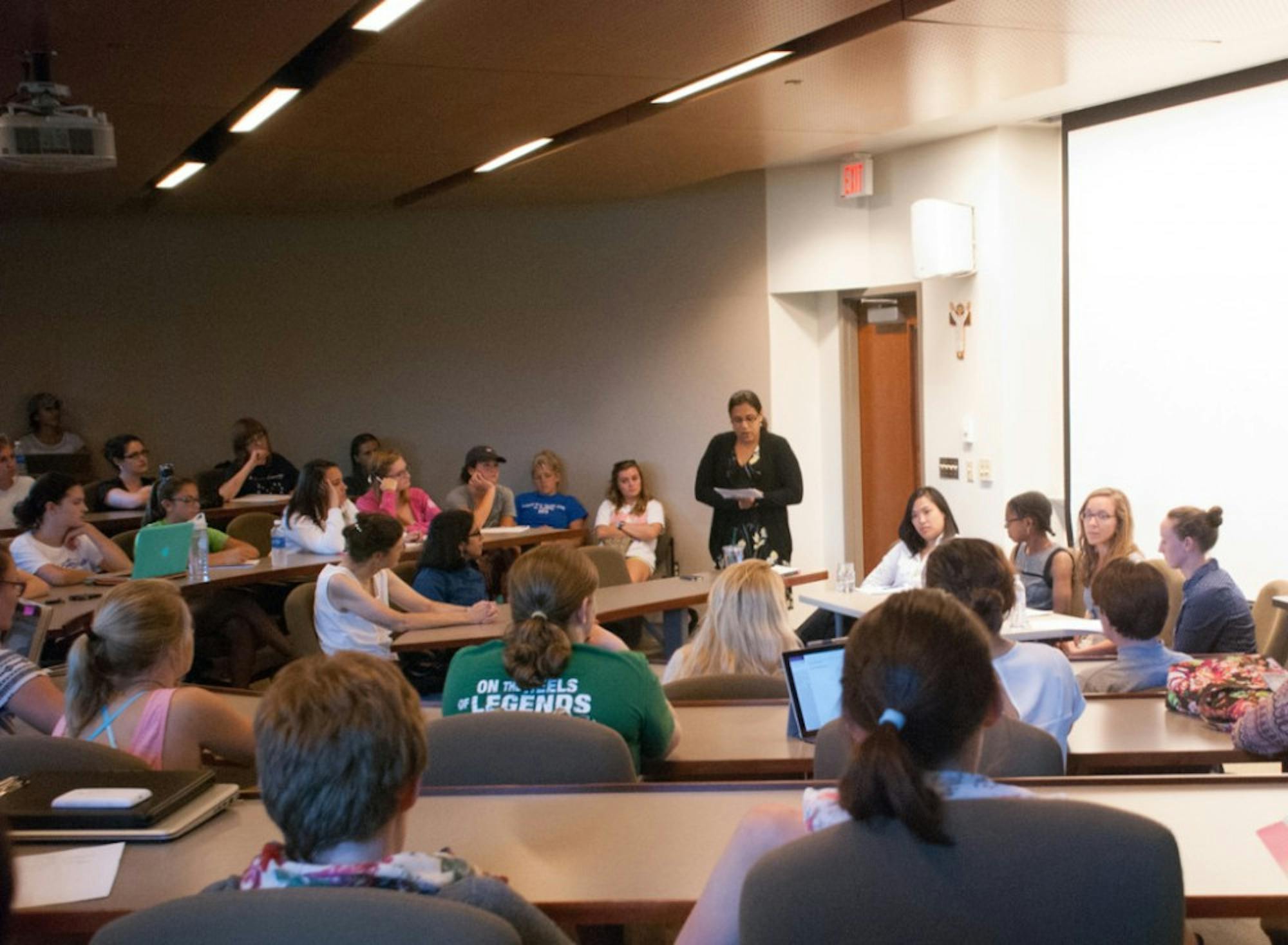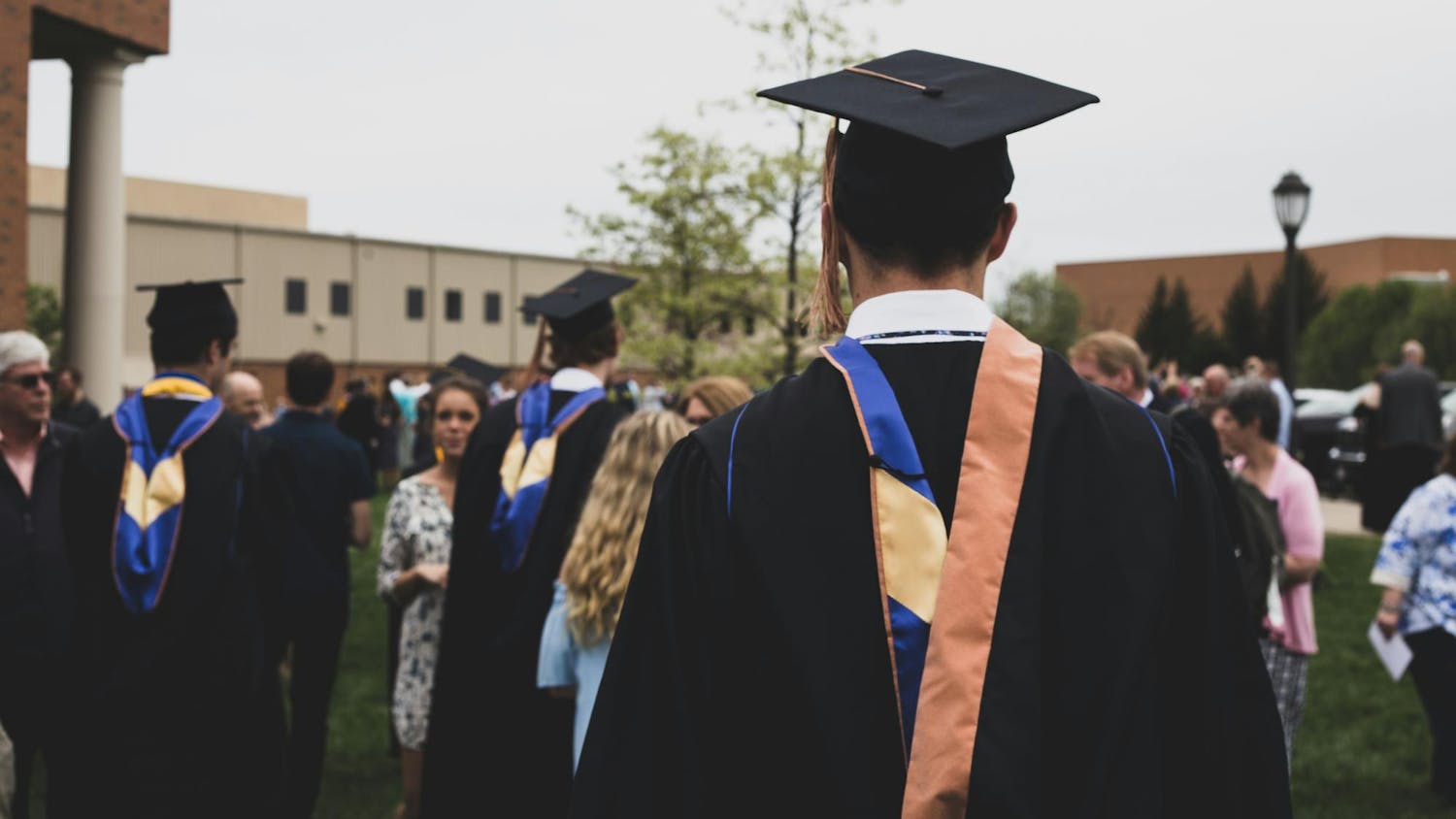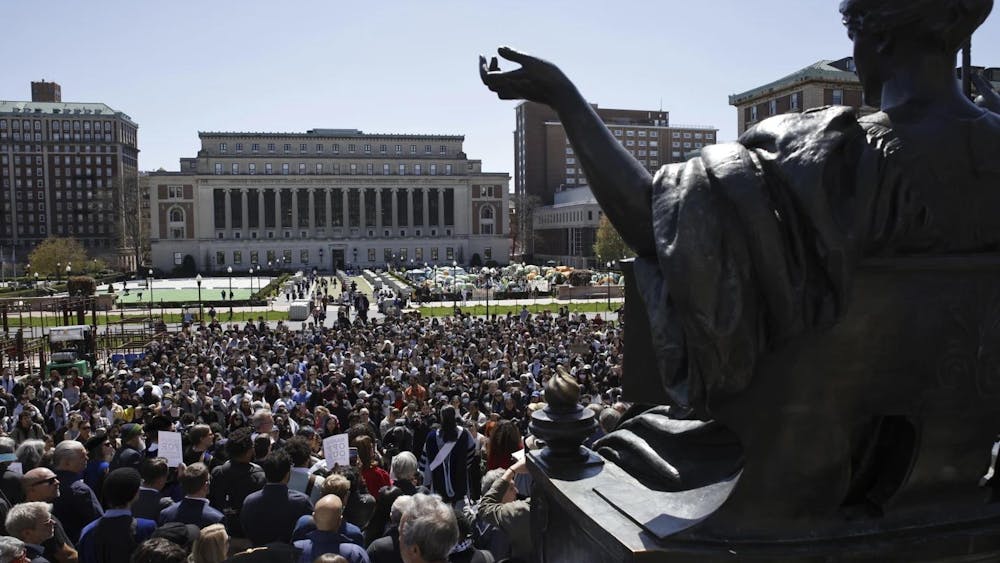A panel discussion Tuesday at Saint Mary's titled "Understanding Ferguson and its Aftermath" explored the Aug. 9 shooting of Michael Brown by police officer Darren Wilson in Ferguson, Mo., and used the incident as a starting point for interdisciplinary dialogue among faculty and students, panelist and professor of communication studies Helen Ho said.
“The Ferguson story has become such an enormous and ongoing contentious narrative in the last few months, and it’s something that sets the backdrop for our return to campus, a place for critical discussion and thoughtful deliberation," Ho said. "Panels like this help can help to provide a space for conversation, as well as a contextualization and synthesis of ideas for those who have been following, or trying to follow, the events."
“During the weeks that followed [the shooting of Michael Brown], there was a lot of news coverage of the event and the community grieved … while the police in Ferguson responded to it with tanks and tear gas," Alfonso-Forero said. "We were talking about how we might address this issue with our students, and we’d feel remiss if we didn’t address this in some way.”
The purpose of the panel was to discuss the historical and social contexts of the shooting, the militarization of police in Ferguson and the ongoing protests demanding justice, Wagman said.
“We know there was a confrontation between an armed police officer and an unarmed teenager," she said. "… The community responded with protests. The protest pride became ‘Hands up, don’t shoot.’ Other towns, cities and college campuses held rallies for peace and justice. At times, the media has questioned Brown’s character.”
Maher said the increased role of social media in telling and spreading stories like those from Ferguson highlight her generation's reluctance to use social media as a truly reliable informing medium. She encouraged the audience to use social media for more substantive discussions using credible sources.
“In the age of social media, we don’t research why, and context is not something we value," she said. "Headlines are often the only way we read a newspaper. Social media is not meant to be comprehensive, it’s meant to be social.
"Our society is increasingly underinformed. The picture we get from the news media is uninformed. Declaring our personal stance in social media seems significant, [but] you should be moved to look at more than just a Buzzfeed article. Change the narrative, find context. Publish articles in your status.”
Davis addressed the subject of militarization, particularly armed police militarization and the perceptions of police in African-American communities.
“One of the things that folks have been protesting about in Ferguson is what they have called the militarization of the police force, the use of armored cars," Davis said. “The police have acted like the military."
“My hope is that what is happening in Ferguson will once again start a conversation about the relationship between law enforcement and civilians," she said. “At least in black communities, this is just one more unarmed black kid. The hope for us and for anybody is, can we reach a point where these things do not happen? Most of the folks in Ferguson just want to know what happened to one of their own."
Ho said the American public should question why it grows indifferent to these types of tragedies and how the stories are portrayed in the media.
“Part of the way some media outlets are discussing this story is that ‘tragedies like this occur all the time,’ and Brown’s death shouldn’t be made a big deal,” she said. “This reaction downplays the real emotions and histories felt by various populations and communities and the real lived experiences that some of us cannot and will not ever be able to fully comprehend.”
Beyond media treatment of the story, Ho said Americans should realize the role of government officials in the incident and inform themselves about the deep-seeded issues behind the incident.
“We should, as citizens in a democracy, have a right to hold our elected officials accountable and have a say in how we are protected, and by whom,” Ho said. “… It’s easy for outsiders, professional reporters, politicians and others to say things should be fine in a place like Ferguson. But, those who have talked to the residents of Ferguson find a different story, a story about a community whose lived experience is very different.
"The fact that this story has resonated for so many around the country illustrates that these feelings and experiences resonate beyond Ferguson. This shared sense of, ‘here we go again,’ is something people should be using to come together to discuss larger contexts of race, representation, media narratives and social justice.”













